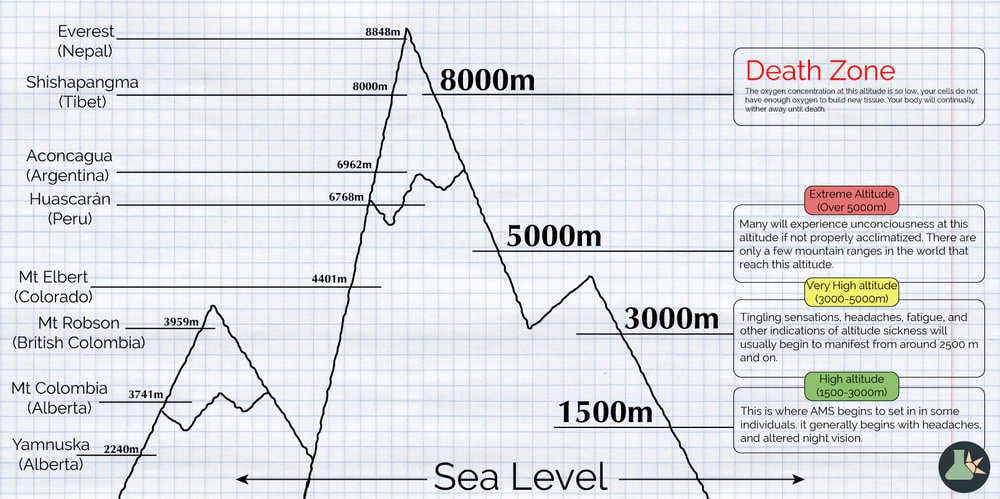

Abstracts of the studies retrieved from the initial search were assessed by an information specialist. We also searched for retractions of studies included in the review. An additional search within the Cochrane Library was carried out for the Database of Abstracts of Reviews of Effects (DARE) and Health Technology Assessment (HTA) database. The following databases were used to identify studies for this systematic review: Medline 1966 to October 2009, Embase 1980 to October 2009, and The Cochrane Database of Systematic Reviews 2009, Issue 4. The overall odds ratio for developing acute mountain sickness in susceptible compared with non-susceptible people was 2.9 (95% CI 2.1 to 4.1).Ĭlinical Evidence search and appraisal October 2009. In non-susceptible people, the corresponding values were 31%, 16%, 11%, and 4%. It found that, in susceptible people (who had previously had acute mountain sickness at high altitude), the prevalence of acute mountain sickness was 58% with rapid ascent and no pre-exposure, 29% with pre-exposure only, 33% with slow ascent only, and 7% with both pre-exposure and slow ascent. In this study, pre-exposure was defined as having spent more than 4 days above 3000 m in the preceding 2 months, and slow ascent was defined as ascending in more than 3 days. One survey in Switzerland (827 mountaineers ascending to 4559 m) examined the effects of susceptibility, pre-exposure, and ascent rate on acute mountain sickness. One systematic review (search date 1999) comparing prophylactic agents versus placebo found that, among people receiving placebo, the incidence of acute mountain sickness was higher with a faster rate of ascent (54% of people at a mean ascent rate of 91 m/hour 73% at a mean ascent rate of 1268 m/hour 89% at a simulated ascent rate in a hypobaric chamber of 1647 m/hour). However, the study was too small to exclude these as risk factors, or to quantify risks reliably.

It found no evidence of a difference in risk between men and women, or that previous episodes of altitude experience, load carried, or recent respiratory infections, affected risk. One survey in the Himalayas identified the rate of ascent and absolute height attained as the only risk factors for acute mountain sickness.


 0 kommentar(er)
0 kommentar(er)
